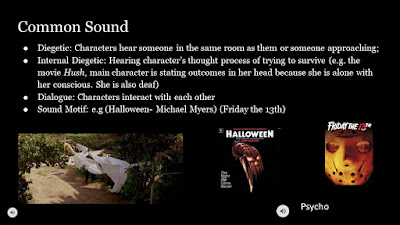There are multiple different camera angles & shots used throughout the entire movie. Some of them being: tilt, pan, zoom, shot reverse shot, and more. Whenever two characters were speaking with each other, there would be a shot/reverse shot focused on those specific characters, and their emotions and expressions. Throughout the majority of the film, it would stay at an eye-level angle, with the occasional high angle and low angle, of course (especially in intense scenes). The reason for this is to fully immerse the audience into the film, for them to have a better experience and to feel as if they are among the characters and as if they were in there, too. There were many fighting scenes in this film, and whenever those would occur, there would be tilts, pans, and zooms. This is mostly done to give the fighting scene more life and action. The film would also have many close up shots. Mostly whenever a character would cry, get a nose bleed, ponders, or is just speaking in general. Many establishing shots would also occur. This is done to let the audience know where the current scene is about to take place in (e.i. Rose's House, The Police Station, etc.).
In the film, the camera tends to move frequently, especially during intense scenes. There is a scene where Chris tries to leave the house and the white people confront him. In this scene, he realizes the situation he is in. There is somewhat of a fight between him and the others. The camera pans and tilts a lot, as they go back and forth between Chris and the white people. In the end, Chris falls to the ground, and the camera is at a high angle, as the others look down at him. Later, in another fight scene, Chris escapes the room where he was placed in before, unconscious. He attacks the person in his room who is unaware of his presence. As he kills him, the camera does a close-up of his face and a high angle of the body on the ground. It then pans to a deer head mounted on the wall. Then, the scene cross-cuts to a man operating on a man's head in the room nearby, when the camera follows Chris as he runs into the man with the deer head, killing him.
The costumes and clothes used in the film were meant to be distinctive, between the rich, old, classy white people who wore more fancy and traditional clothing, while Chris and his friends wore more modern attire. The lighting in the film is also very ominous, especially in important scenes (like fighting) where it was very dim and tense. The action in the film is very present, as there were many important and violent encounters between the characters. The makeup is not very noticeable in the film, but you can clearly see it on the characters. Makeup is especially used on the white people at the house, to show how cleaned up and classy they were, while Chris wasn't. Many props were used in the film. Mostly used to show that they were in a fancy house. Such as very expensive and fancy furniture all throughout the house. The setting of the film is meant to appear to be a small town, with some urban areas, but then Chris leaves to the suburban areas with Rose, where he spends most of the film in.
Throughout the entire movie, there is a lot of eerie music, to give the film an ominous tone and sense. As well as numerous editing techniques, like the cross-cutting, and CGI used in the film. Some of the elements that I enjoyed about this movie was the music and the lighting. The music gave me a very nervous and chilling vibe throughout the film, knowing something bad is about to happen. The lighting also did this, many of the scenes took place at night, using dim lighting. This can be considered candles, street lights, and simply dim indoor lighting. However, I disliked the climax and build-up toward it. I felt as if it was too direct, and I wish it were more mysterious. Some elements of the Thriller Genre used in this film was the dim lighting, tense music, diegetic sound of breathing, and quick cuts. All of these were used throughout the film in one way or another.








































